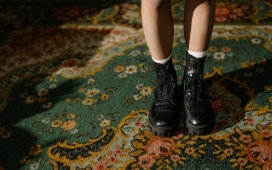A bookkeeper in eastern Suzhou, Guo, 24, likes Mentor and Louis Vuitton and has purchased Skin inflammation Studios scarves, a Daniel Wellington watch and a Mont Blanc belt as endowments. Of a yearly pay of 50,000 yuan ($7,898), she burns through one-fifth on luxury things.
“Luxury is certifiably not an aggregate need for me, I assume, yet at whatever point I have enough cash to extra, at that point I’ll purchase,” she said.
Guo and her companion assemble are behind a sensational spike in luxury spending in China a year ago, as per consultancy Bain and Co. They are the key statistic for luxury brands from LVMH to Gucci proprietor Kering and France’s Hermes in tapping the world’s best luxury customers.
Their ability to spend – regularly more than they can manage the cost of – accompanies a note of alert. These purchasers are ordinarily less faithful to customary brands, influenced by moving patterns on the web and progressively searching for bargains.
“A portion of these youths, notwithstanding when they don’t generally have enough supports, regardless they’re going out and purchasing luxury items,” said Huang Yue, 27, who runs the form area at the site “Loving Luxury.”
Yue added that the move to millennials, those matured approximately 20-34, had been sensational. It impelled the ascent of new regions, for example, luxury “streetwear” and brandishing clothing, which Bain said were behind the ongoing quick development.
“Regarding the effect available, it’s extremely given it a jolt,” Yue said.
Driven by general positive thinking, pulled in by the simplicity of web-based shopping and aided en route by guardians who profited from the nation’s quick development and rising home costs, Chinese recent college grads are floating the luxury showcase at home and abroad.
Millennial customers pushed the Chinese market up to 142 billion yuan ($22.07 billion) in deals a year ago, around 20 percent higher than the prior year. It is by a wide margin the steepest bounce in finished a large portion of a time of drowsy development, as per Bain.
Luxury merchandise acquired in China make up 8 percent of the worldwide aggregate, while Chinese customers – who make seventy-five percent of their luxury buys abroad – drive 32 percent of offers around the world.
LVMH’s CEO, Bernard Arnault, said China was an “extremely powerful” market in which the Louis Vuitton mark was doing great.
“China has had a decent rebound,” he told correspondents a week ago. The organization has seen a moderate recuperation in China since a frail begin to 2016.
Gucci and cognac producer Remy Cointreau is among other understood organizations referring to more grounded development in the market.
Investigators and industry insiders, be that as it may, said customers were enlarging the scope of brands they took a gander at, a test for some more conventional players.
Embroidered artwork Inc’s Mentor and English form house Burberry both revealed weaker finishes to a year ago. Prada – which had seen deals droop in China – has been building organizations with powerful web identities and propelled an online shop in December.
Online retailers like Alibaba Gathering Holding Ltd and JD.com have propelled their own luxury stages and baited in brands, for example, Yves Holy person Laurent, Stella McCartney and Alexander McQueen.
“Chinese customers are experiencing a few changes,” Liao Jianwen, a boss vital officer at JD.com, told the Reuters Worldwide Markets Discussion at the World Monetary Gathering in Davos, including that customers currently need superb items at “aggressive costs.”
Zhang Xia, 24, a venture proficient in the southern city of Chongqing, has purchased Dior sacks, Louis Vuitton, Bulgari adornments, and once paid 150,000 yuan ($23,695) for a Piaget watch. She’s currently less effortlessly prevailed upon.
“Progressively what I’m after now is unique examples and plans,” she stated, including that, as Guo, she some of the time gets help paying for her buys. “It’s more about the quality and feel of the item, so on the off chance that I can find that I won’t really pick a luxury mark.”
The move has implied the ascent of regions not beforehand observed as being in an indistinguishable space from customary luxury, including easygoing wear, “streetwear” and even premium games garments.
Customers are likewise all the more eager to purchase utilized products. That implies individuals making new buys can offer their merchandise later, settling the cost of an expensive thing.
“Since individuals realize that they can offer things actually, they’re not all that strict with their luxury spending plans,” said Deng Yun, 33, the head working officer of utilized luxury merchandise exchanging stage www.luxusj.com.
He said the most well-known brands on the site were satchels from Louis Vuitton, Chanel, Gucci, and Fendi. Chloe, claimed by luxury house Richemont, is famous with more youthful customers, while Hermes still has great cachet, he included.
The top-notch sportswear firm Lululemon, seeing a solid request from China’s childhood, is presently “centered around investigating and growing new ways to deal with a catch this gathering of people,” said Amanda Casgar, Lululemon’s Asia Pacific chief of brand and network.
Prevailing upon the guardians of youthful customers like Guo could be useful as well – they are frequently a wellspring of assets for an age progressively slanted to obtain or utilize credit.
Top websites about Luxury in China







